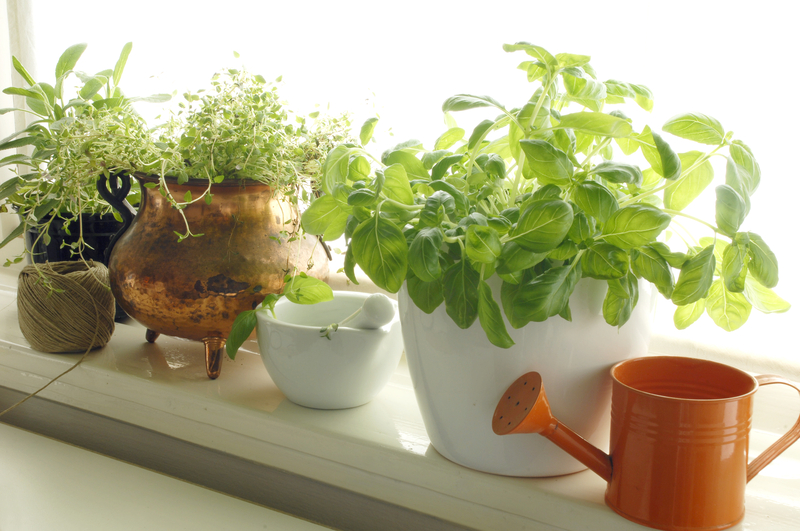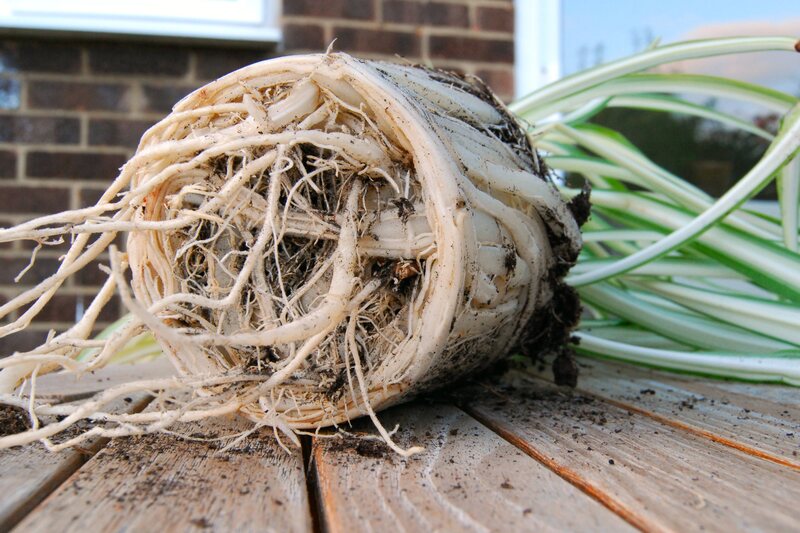Container Gardening: A Fresh Approach to Urban Greenery
Posted on 22/09/2025
Container Gardening: A Fresh Approach to Urban Greenery
Container gardening is revolutionizing the way we think about urban greenery. With cities becoming more crowded and traditional garden spaces diminishing, urban dwellers are turning to compact, flexible solutions to bring nature into their lives. Container gardening, also known as pot or tub gardening, offers a versatile and accessible way to nurture plants, herbs, and even vegetables in urban environments, transforming balconies, rooftops, patios, and even windowsills into thriving green sanctuaries.
Why Container Gardening Is Perfect for Urban Environments
Urban container gardening has gained immense popularity for several important reasons. Below, we explore the urban-friendly benefits of this innovative approach:
- Space Efficiency: Pots, planters, and other containers require little ground area, making them ideal for apartments and small homes.
- Flexibility: Easily move containers to optimize sunlight, redecorate, or protect sensitive plants from harsh weather.
- Accessibility: Raised or elevated planters work well for gardeners with mobility challenges.
- Disease Control: Soil-borne diseases are minimized, and plant health is easier to monitor.
- Creative Freedom: Experiment with different aesthetics, container types, and plant combinations.
Unlocking Green Spaces in Unexpected Places
From squat pots lined along stairways to vertical gardens on balcony walls, container gardening can unleash your creativity. With just a few planters, even the tightest city dwelling can flourish with greenery. This method also makes gardening approachable for beginners and rewarding for experts, regardless of space restrictions.

Essential Tools and Materials for Container Gardening
Starting a container garden doesn't require an elaborate setup. However, the right materials will help your plants thrive. Here's what you need:
- Containers: Choose pots, troughs, buckets, hanging baskets, window boxes, or recycled objects. Ensure they have drainage holes.
- Potting Mix: Select high-quality, lightweight soil blends specifically for containers; avoid using garden earth.
- Plants: Opt for varieties suited to smaller root systems or the specific light and temperature conditions you have.
- Fertilizers: Container plants benefit from consistent feeding, as nutrients in potting mixes deplete faster than garden soil.
- Watering Tools: Watering cans with narrow spouts or drip irrigation kits work well for reaching crowded containers.
- Mulch: Helps retain moisture and minimize evaporation in exposed pots.
- Decorative Elements: Pebbles, trellises, and plant markers improve both function and aesthetics.
Choosing the Right Container
Not all pots are created equal! Container selection impacts plant health and growth. Keep these factors in mind:
- Material: Clay and terracotta are porous, which helps prevent overwatering but may dry out quickly. Plastic and fiberglass retain moisture better but may overheat in full sun.
- Size: Larger containers provide more stable environments and require less frequent watering than smaller pots.
- Shape: Deep-rooted plants like tomatoes or roses need tall pots; shallow-rooted herbs or succulents can thrive in tray-like containers.
Best Plants for Urban Container Gardens
Wondering which plants to choose for your city container garden? Certain species are more adaptable and forgiving:
- Herbs: Basil, chives, parsley, mint, thyme, and oregano grow beautifully in small containers and offer fresh flavors right at home.
- Vegetables: Tomatoes, peppers, lettuce, spinach, radishes, and dwarf carrots are perfect candidates for urban vegetable container gardens.
- Flowers: Petunias, pansies, geraniums, marigolds, impatiens, and begonias create colorful displays in pots.
- Succulents & Cacti: Ideal for low-maintenance, drought-tolerant container compositions.
- Small Shrubs & Dwarf Trees: Dwarf citrus, Japanese maple, or compact conifers provide structure, privacy, or even fruit crops.
- Climbing Plants: Nasturtiums, morning glory, or dwarf sweet peas trained onto small trellises create vertical interest in limited spaces.
Seasonal Plants and Rotations
City climates can vary greatly, so adapt your container garden with the seasons. In spring and summer, focus on sun-loving annuals and vegetables. In autumn or winter, select cold-hardy plants or decorative evergreens to maintain vibrancy. Rotating pots indoors during harsh weather can extend the growing season.
How to Care for Container Gardens in Urban Areas
Urban environments present unique challenges but also offer creative solutions. Use these tips for maintaining a thriving urban potted garden:
1. Water Wisely
Containers dry out faster than ground soil. During hot or windy weather, daily watering may be needed; in cooler months, less frequent watering suffices. Consider self-watering planters or automated drip systems for ease and consistency.
2. Use Quality Potting Mix
Start with a premium container-friendly soil mix that offers proper drainage and nutrient retention. Avoid using ordinary garden soil, which compacts and drains poorly in pots.
3. Feed Regularly
Nutrients leach away faster in containers, so supplement with a balanced, slow-release fertilizer according to your plant's needs. Liquid feeds can provide quick boosts during active growth phases.
4. Prune and Pinch
Most urban garden containers benefit from light pruning or pinching back to encourage bushier growth and more blooms or higher yields.
5. Rotate and Reposition
Maximize sunlight and airflow by occasionally moving containers. This also helps prevent pests and diseases from gaining a foothold.
6. Manage Pests and Diseases
Urban gardens can attract aphids, spider mites, and fungal diseases. Inspect plants regularly, remove affected leaves, and consider organic deterrents like neem oil. Avoid overcrowding by spacing containers well.
7. Rejuvenate the Soil
Refresh the top layer of potting mix each season and repot plants that have outgrown their spaces. Composting old annual plants can return nutrients to the soil if you have a small compost system.
Creative Container Gardening Ideas for Urban Spaces
Don't just stick to traditional pots-let your imagination guide you! Here are inspiring ideas to maximize your urban greenery with innovative container gardening:
- Vertical Gardens: Mount stacked modular planters or wall pockets to grow up instead of out, saving floor space.
- Hanging Baskets: Suspend from railings, ceilings, or window hooks, ideal for trailing plants or blooming annuals.
- Repurposed Containers: Reuse old tins, wooden crates, wine barrels, or even shoes for quirky, eco-friendly plant displays.
- Windowsill Herb Gardens: Grow culinary herbs right inside your kitchen, steps from the stove.
- Rooftop Edible Gardens: Turn flat roofs into bountiful harvests by grouping lightweight pots for veggies, salad greens, and berries.
- Living Privacy Screens: Arrange tall planters with bamboo or ornamental grasses to shield balconies from view.
Eco-Friendly Benefits of Container Gardening in Cities
Container gardening is more than just a hobby-it's a step toward greener, more livable cities. Here's how:
- Improved Air Quality: Live plants filter the air, reducing pollutants and urban heat effects around your home.
- Food Security: Growing herbs, greens, and vegetables locally cuts down on transportation emissions and encourages sustainable eating.
- Urban Biodiversity: Even small container setups attract pollinators like bees and butterflies, vital for city ecosystems.
- Resource Conservation: Modern self-watering pots and drip irrigation minimize water use compared to traditional gardens.
- Well-being Boost: Studies show that interaction with greenery reduces stress, improves mental health, and even enhances productivity indoors.

Common Mistakes to Avoid in Container Gardening
- Overwatering: Ensure containers have proper drainage; soggy soil can doom even the hardiest plant.
- Using Garden Soil: Always use potting mix for optimal plant health and growth.
- Neglecting Sunlight Needs: Place containers where they receive the recommended amount of sunlight for your chosen plants.
- Poor Container Choice: Choose the right pot size and material for your specific plant and location.
- Overcrowding: Give each plant space to grow, both above and below the soil surface.
Tips for Long-Lasting Urban Container Gardens
Remember to monitor your containers regularly, replace underperforming plants, experiment with seasonal combos, and don't be afraid to swap out pots or switch locations as the weather changes.
Conclusion: Bringing a Fresh Approach to Urban Greenery
Container gardening opens new doors for city residents longing to connect with nature. Whether you're nurturing a few potted herbs on a windowsill or cultivating a full-fledged urban vegetable container garden on a rooftop, this fresh approach allows anyone to cultivate beauty, health, and sustainability in their daily environment. With a mix of creativity, patience, and care, you too can enjoy the pleasures and rewards of a portable, flexible, and vibrant green space in the heart of the city.
Start Your Urban Container Garden Today!
Explore your options, get your hands dirty, and join the growing movement towards container gardening for urban greenery. No space is too small-every pot counts in the global effort to bring more life and color to our cities.

